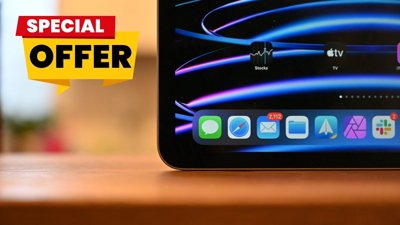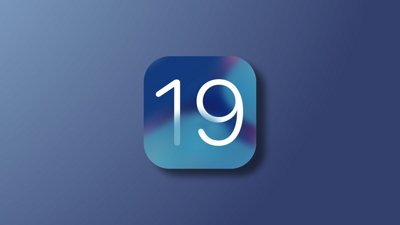In the follow-up to Apple's blockbuster December quarter, the company could exceed sales of 50 million iPhones in the current March frame, companies in the Apple supply chain reportedly believe.
Citing sources within Taiwan's handset supply chain, DigiTimes reported on Tuesday that component makers expect Apple's iPhone will top the 50-million-sale mark for the first time ever outside of the holiday shopping season. Reaching 50 million units in the three-month period would represent an increase of 14.4 percent from the 43.7 million iPhones the company shipped in the March quarter of 2014.
To date, Apple has exceeded sales of 50 million iPhones in a single quarter twice, and both of those were holiday quarters.
Apple's second quarter of fiscal 2015 runs through the end of March, and will represent the second full quarter of sales of the new iPhone 6 and iPhone 6 Plus.
Demand during the March quarter is expected to be bolstered by Greater China, where the upcoming Lunar New Year could bolster sales of the iPhone. Sources in the supply chain reportedly believe that Apple's Asia-Pacific sales will continue to rise and take up an increasing part of the company's bottom line.
Alleged supply chain expectations for the iPhone are about in line with Wall Street projections, as analyst Gene Munster of Piper Jaffray says that the market generally expects about 51 million iPhone units to be sold in the March period.
Apple has exceeded the 50-million threshold only twice before: Just recently in the holiday 2014 quarter, when it sold a record shattering 74.5 million units, and in the holiday 2013 quarter when it achieved sales of 51 million iPhones.
Apple revealed last week that it shipped its one-billionth iOS device last quarter, with the iPhone representing the lion's share of device sales. Chief Executive Tim Cook also signaled to investors that the strong momentum for the iPhone lineup will continue, as only 14 percent of users had upgraded from previous-generation handsets.
 Neil Hughes
Neil Hughes








 Christine McKee
Christine McKee
 Malcolm Owen
Malcolm Owen

 Charles Martin
Charles Martin


 Mike Wuerthele
Mike Wuerthele


-m.jpg)






13 Comments
Apple is 'domed' :D
50 million this quarter with the growing Chinese demand...no sweat.
TSMC's gotta be loving all the A8 business.
What'll be hard is switching from iP6 to iP6S production, they'll have to either use entirely separate lines or just endure a supply chain shortage for a while.
I would assume that a good portion of those sales will be the iPhone 6 Plus to the Chinese, which would likely mean breaking another quarterly record. I expect Apple to continue to fill this Wikipedia page of quarterly earnings exceeding $10 billion for some time to come. [LIST][*] http://en.wikipedia.org/wiki/List_of_largest_corporate_profits_and_losses#Largest_corporate_quarterly_earnings_of_all_time [/LIST] edit: Even without ?Watch I'd think Apple is on track to get over $10 billion in profit every quarter per year. [IMG ALT=""]http://forums.appleinsider.com/content/type/61/id/55026/width/500/height/1000[/IMG] [I](Chart data courtesy of [@]NasserAE[/@] — http://bit.ly/1F2bsyj)[/I] [quote name="TheWhiteFalcon" url="/t/184626/supply-chain-expects-apple-to-ship-more-than-50m-iphones-in-current-march-quarter#post_2670488"]TSMC's gotta be loving all the A8 business. What'll be hard is switching from iP6 to iP6S production, they'll have to either use entirely separate lines or just endure a supply chain shortage for a while.[/quote] Based on what I know of Apple and Cook's ability to plan ahead, and his vague comment about certain markets preferring the larger display size, I would think they worked this out months ago. If the difference is USA prefers iPhone 6 for Christmas and China prefers iPhone 6 Plus for Chinese New Year, then that sounds like it could be serendipitous to Apple longterm.
But but but Cook is just a great COO. If accurate, that's a lot of iPhones.